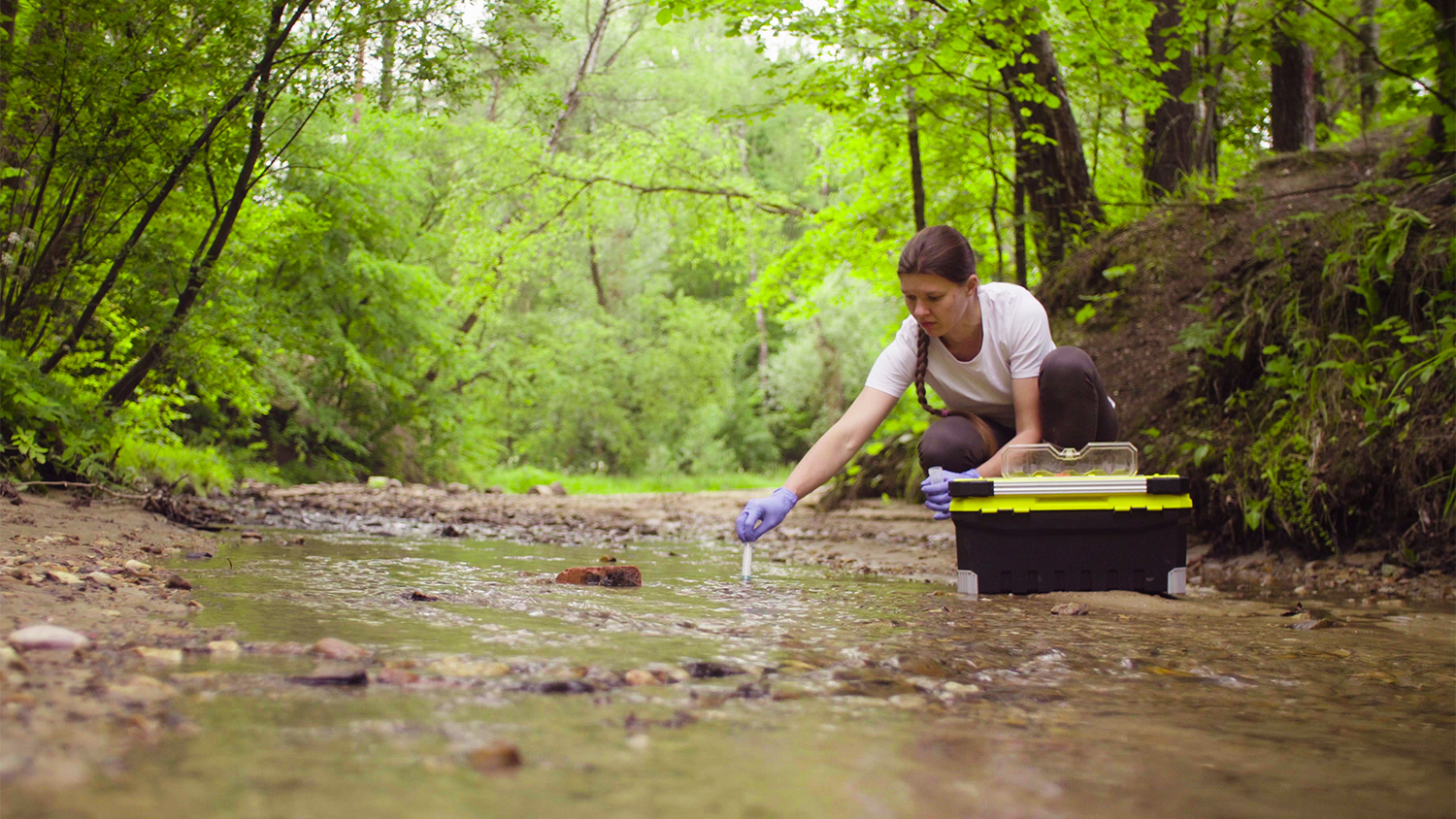Environmental Science
 Photo courtesy of NC State UniversityOpens in new window
Photo courtesy of NC State UniversityOpens in new window
Environmental Science provides an integrated and interdisciplinary approach to understand and mitigate hazards arising from anthropogenic and natural activities by focusing on key areas of environmental chemistry, earth sciences, environmental engineering, atmospheric sciences, and sustainable systems. Environmental science emerged from the fields of natural history and medicine during the EnlightenmentOpens in new window. |
What is Environmental Science?
Environmental Science is an interdisciplinary academic field that integrates physical, biological and information sciences (including ecology, biology, physics, chemistry, plant science, zoology, mineralogy, oceanology, limnology, soil science, geology and physical geography and atmospheric science) to the study of the environment, and the solution of environmental problems.
As a Branch of Science, Environmental Science deals with the study of different components of environment, the factors influencing the changes in the environment and the interdependence of living things within their environment. These include the study of:
- climatic change;
- conservation of energy;
- biodiversity;
- ground water and soil contamination;
- technologies developed to treat air pollution,
- sound pollution etc.
Envioronmental scientists work on subjects like the understanding of earth processes, evaluating alternative energy systems, pollution control and mitigation, natural resource management, and the effects of global climate change. Environmental issues almost always include an interaction of physical, chemical, and biological processes.
Environmental scientists bring a systems approach to the analysis of environmental problems. Key elements of an effective environmental scientist include the ability to relate space and time relationships as well as quantitative analysis.
Environmental scientists are involved in the study of changes in the earth’s atmosphere. Their major objective is to find new ways to improve and conserve the standard of living by examining the circumstances of the environment, recognizing the impact of human actions on earthly and aquatic ecosystems, and developing strategies for restoring ecosystems. They conduct research studies in order to develop different methods for decreasing and controlling the sources of environmental pollution.
Though environmental science is a broad field of study, no specific separation is needed because its branches overlap with each other. However to make things easier environmental science has been divided as:
- Environmental Chemistry — dealing with the chemical changes in water, air and soil
- Ecology — the study of interactions of various species of living organism with one another and with the physical and chemical environment
- Geosciences — also known as earth science, it deals with the study of demographical part of the environment including oceans, biosphere, mountain, solid earth
- Atmospheric Science the study of the gaseous layer that covers the earth like a blanket
- Environmental Assessment — deals with the ways and methods to improve and enhance the environment
- Enivironmental Microbiology — related with the study of composition and physiology of microbes and their communities in the environment.
Prospective Tasks for Environmental Scientists
The major task of environmental science professionals is to find new ways to conserve and improve the natural resources of the environment. For that, they study the effects of various sources of pollution on nature and environment and try to control these harms as much as possible with appropriate methods.
Through their work they convey hope and commitment to the public. They can work with different government departments and agencies like forest and environment, pollution control boards, urban planning, water resources and agriculture etc.
Environmental scientists bring a systems approach to the analysis of environmental problems. There is enormous scope for these people in food processing industries, fertilizer plants, waste treatment industries, refineries, distilleries, mines and textile mills. Their work profile include research and development in the areas of solid waste management, management of toxic waste and biological waste, chemical waste and various other types of waste.
Environmental scientists can also seek opportunities in international agencies, national governments, industries, MNCs, research institutes etc. other options include employment in media as environment journalists, lecturers in universities or colleges and also with the NGO’s working for environmental protection.
Some of the work areas of environmental scientists are:
- Industrial Sector: In the industrial sector, environmental professionals/scientists work for maintaining an ecological balance, biodiversity and wasteland management, and the preservation of natural resources.
- Research and Development: In the research and development wings of various universities and government organizations, they conduct research studies to develop theories or methods for controlling the sources of environmental pollution.
- Environmental Consultants: Consultants can work with central and state pollution control board and offer advice related to the environment.
- Forest Management: Trained professionals in environmental science are needed for management and maintenance of forest and wildlife.
- Environmentalist: They help to protect the environment from destruction or pollution. Cleansing of rivers and forests are some of the activities in which the environmentalist is involved.
- Environmental Journalism: Trained journalists in this field are required for reporting environmental issues and related comprehensive news.
- Social Development: To create awareness among public about various environmental issues and their responsibility to keep the natural system in a condition that it sustains life.
You might also study:
- Sadava. D, H.C. Heller, G.H. Orians, W. Purves, D.M. Hillis. Life: The Science of Biology, 8th edition. Sinauer Associatews and W.H. Freeman and Company 2008.
- Cunningham, W.M. Cunningham and B. Saigo, Environmental Science: A Global Concern., McGraw Hill, 2007, p.374.
- The Calvin cycle takes place in the stroma, the part of the chloroplast where CO2 is converted to sugars.
- Wilson, E. O. “Vanishing before our eyes.” Time Magazine April-May 2000, pp. 29 – 30.
- R. Costanza, R. d’Arge, R.de Groot, S. Farber, M.Grasso B. Hannon, K. Limburg, S. Naeem, R.V.O’Neil, J. Paruelo, R. Raskin, P. Sutton and M. van den Belt, “The Value of the World’s Ecosystem Services and Natural Capital,” Nature 385 (May 1997): 253 – 262.

